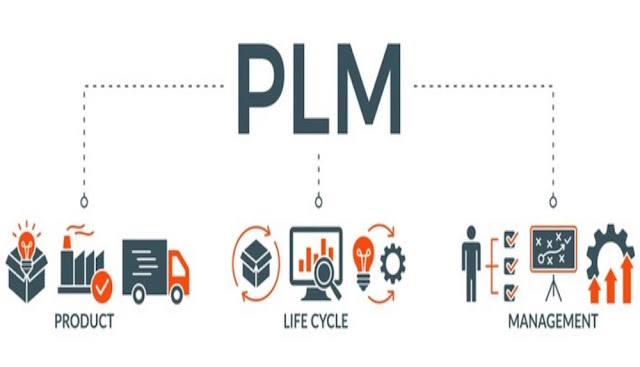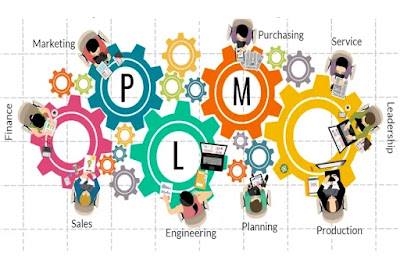In today's fast-paced corporate world, managing complicated product development processes can be difficult. However, it is important for maintaining competitiveness, lowering costs, and assuring quality. This is where product lifecycle management (PLM) software proves to be a useful tool, transforming how businesses manage the complete journey of a product.
In fact, the PLM software market is projected to reach a value of more than $40 million by 2029, proving that many companies will continue implementing this software. PLM software is a system that manages all of the information and procedures related to a product, from its conception and design to manufacturing and distribution, and finally, retirement or disposal. It acts as a consolidated repository for all data relevant to the product management lifecycle, allowing multiple departments within a company to communicate and coordinate their activities.
This article will focus on how companies may use PLM software to manage workflows more efficiently, from automating basic operations to promoting collaborative work environments, maintaining compliance, and seamlessly connecting with other enterprise systems. Continue reading to learn more about how PLM software can improve your workflow management operations.
Increased cooperation generates more ideas from everyone, which benefits the innovation process. For instance, if you own a fashion company, implementing apparel PLM software is the key to your success. This software handles designs, materials, specifications, pricing, and suppliers, allowing you to optimize accuracy and profit. Integrating apparel PLM software into your online fashion store may enable you to automate several company activities, including inventory management, order taking and fulfillment, return handling, payment processing, and financial record keeping. In the rapidly expanding fashion industry, PLMs are essential for both small and big companies.
From inspiration and design ideas to final development, PLM software simplifies every stage of a product's production cycle. With a centralized and transparent approach, your team can work together more effectively to address issues before they escalate. This means you can consistently produce high-quality items while also speeding up the process.
In fact, the PLM software market is projected to reach a value of more than $40 million by 2029, proving that many companies will continue implementing this software. PLM software is a system that manages all of the information and procedures related to a product, from its conception and design to manufacturing and distribution, and finally, retirement or disposal. It acts as a consolidated repository for all data relevant to the product management lifecycle, allowing multiple departments within a company to communicate and coordinate their activities.
This article will focus on how companies may use PLM software to manage workflows more efficiently, from automating basic operations to promoting collaborative work environments, maintaining compliance, and seamlessly connecting with other enterprise systems. Continue reading to learn more about how PLM software can improve your workflow management operations.
Improves your business operations
PLM provides brands with a comprehensive perspective of the complete product development process in one image. It also gives marketers comprehensive control over every aspect of product creation and delivers real-world standardized data throughout the production chain. The PLM method facilitates product development and subsequent product innovation. Because it increases openness and efficiency in the manufacturing process, it fosters innovation and improves product modifications.Increased cooperation generates more ideas from everyone, which benefits the innovation process. For instance, if you own a fashion company, implementing apparel PLM software is the key to your success. This software handles designs, materials, specifications, pricing, and suppliers, allowing you to optimize accuracy and profit. Integrating apparel PLM software into your online fashion store may enable you to automate several company activities, including inventory management, order taking and fulfillment, return handling, payment processing, and financial record keeping. In the rapidly expanding fashion industry, PLMs are essential for both small and big companies.
A central source of inspiration
PLM provides a single area for brainstorming design ideas. No image or detail from the inspiration board will ever be lost. If everyone working on a project can see new ideas, they are more likely to be discovered, shared, and implemented. It allows everyone to contribute to the creative process, regardless of where they are. You may save all of your ideas, styles, prints, needlework, and other pictures in one place, tag them for quick search results, and utilize characteristics to identify designs that fit your preferences.Traceability and transparency
Transparency and traceability are crucial for developing projects. A PLM system monitors and collects data throughout the product's lifespan, resulting in a full audit trail. This traceability guarantees that companies have correct knowledge about the materials' origins, production methods, and environmental effects at each level. It allows companies to test and verify their sustainability claims, ensuring transparency for consumers, regulators, and stakeholders.Shorter lead times, better product quality
Truly high-quality items are not created by chance. Every product must be designed with quality in mind, and a PLM system may assist your company in identifying possibilities for quality improvement throughout the product’s lifecycle.From inspiration and design ideas to final development, PLM software simplifies every stage of a product's production cycle. With a centralized and transparent approach, your team can work together more effectively to address issues before they escalate. This means you can consistently produce high-quality items while also speeding up the process.

